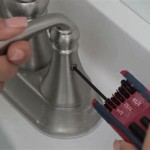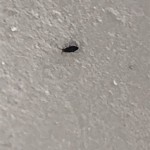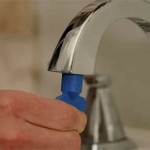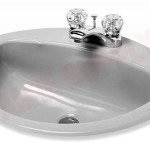Bathroom Sink Clogged Past P Trap: Diagnosis and Solutions
A clogged bathroom sink is a common household problem that can range from a minor inconvenience to a major plumbing headache. While many clogs are located within the sink drain itself or the P-trap, sometimes the blockage occurs further down the drain line, past the P-trap. Identifying and addressing a clog beyond the P-trap requires a different set of diagnostic skills and tools than dealing with a simple sink drain blockage.
This article will explore the possible causes of clogs occurring past the P-trap in a bathroom sink, methods for diagnosing the problem, and various approaches to clearing the obstruction. It will also address preventative measures to minimize the risk of future blockages in the drain system.
Common Causes of Clogs Past the P-Trap
Several factors can contribute to clogs located beyond the easily accessible P-trap. Understanding these common causes is the first step in accurately diagnosing and resolving the issue.
Hair Accumulation: While hair often gets trapped in the sink drain stopper or the P-trap, over time, small amounts of hair can make their way further down the drainpipe. Hair tends to cling to the interior walls of the pipe, gradually accumulating and forming a dense, matted blockage. Soap residue and other debris readily adhere to this hairball, exacerbating the clog.
Soap Scum Buildup: Soap scum, a byproduct of the reaction between soap and hard water minerals (calcium and magnesium), can solidify inside drainpipes. Over time, this buildup narrows the pipe's diameter, restricting water flow and creating a surface for other debris to latch onto. The gradual accumulation of soap scum can eventually lead to a complete blockage, particularly in older plumbing systems with rougher interior pipe surfaces.
Grease and Oil: While less common in bathroom sinks compared to kitchen sinks, grease and oil can still find their way into the drain system, especially if individuals use the bathroom sink to wash paintbrushes or other items containing oily substances. Grease solidifies as it cools, adhering to the pipe walls and trapping other debris, which ultimately contributes to a significant clog.
Mineral Deposits: In areas with hard water, mineral deposits, such as calcium and magnesium, can gradually accumulate on the interior walls of drainpipes. This mineral scale reduces the pipe's internal diameter and creates an uneven surface that readily traps hair, soap scum, and other debris, leading to clogs further down the drain line.
Foreign Objects: Small objects, such as toothpaste caps, jewelry, or cotton swabs, can accidentally fall into the drain and travel past the P-trap. These objects can lodge in the narrower sections of the drainpipe, causing an immediate and often severe blockage. Furthermore, these objects can act as anchors that trap other debris, compounding the problem.
Pipe Sagging or Bellies: Over time, drainpipes can sag or develop bellies, particularly in older homes with inadequate support. These low points in the drain line collect sediment, hair, and other debris, which can eventually consolidate into a solid blockage. This is a structural issue that requires more than just clearing the clog; it necessitates addressing the pipe's support and potentially replacing the affected section.
Root Intrusion: In rare cases, tree roots can infiltrate drainpipes, especially if the pipes are cracked or damaged. Roots seek out moisture and nutrients, and even small cracks in the pipe can provide an entry point. Root intrusion can cause significant blockages and necessitate professional plumbing intervention.
Diagnosing a Clog Past the P-Trap
Proper diagnosis is crucial for effectively addressing a clog located past the P-trap. A systematic approach will help determine the severity and location of the blockage, guiding the choice of appropriate solution.
Visual Inspection: Begin by visually inspecting the area around the sink drain and the exposed sections of the drainpipe. Look for any signs of leaks, corrosion, or damage to the pipes. Check the P-trap for any visible obstructions. If the P-trap is clear and the sink is still draining slowly or not at all, the clog is likely located further down the drain line.
Running Water Test: Run water into the sink and observe how quickly it drains. A fully clogged drain will not drain at all, while a partially clogged drain will drain slowly. Listen for any gurgling sounds coming from the drain, which can indicate a blockage in the drainpipe. Also, observe if other drains in the bathroom or nearby rooms are affected. If multiple drains are slow or clogged, the blockage is likely located in the main drain line.
Plunger Test: Attempt to clear the clog using a plunger. Ensure there is enough water in the sink to cover the cup of the plunger. Create a tight seal around the drain opening and vigorously plunge up and down for several minutes. If the water begins to drain more quickly, the clog may be dislodged. However, if the plunger is ineffective, the clog is likely located further down the drainpipe.
P-Trap Removal and Inspection: If the plunger test fails, remove and inspect the P-trap. Place a bucket underneath the P-trap to catch any water that may be trapped inside. Loosen the slip nuts connecting the P-trap to the drainpipe and carefully remove the P-trap. Inspect the P-trap for any debris or obstructions. Clean the P-trap thoroughly and reassemble it. If the sink still drains slowly or not at all after cleaning the P-trap, the clog is located further down the drain line.
Drain Snake/Auger: A drain snake, also known as a drain auger, is a flexible tool used to break up or retrieve clogs in drainpipes. Insert the drain snake into the drain opening and carefully advance it down the drainpipe, rotating the handle as you go. If you encounter resistance, continue to rotate the handle to break up or dislodge the clog. Once you have cleared the clog, slowly retract the drain snake, cleaning off any debris that is attached to it. Run water into the sink to ensure that the drain is flowing freely.
Plumbing Camera Inspection: For persistent clogs or suspected problems deeper within the drain line, a plumbing camera inspection may be necessary. A plumbing camera is a small, waterproof camera attached to a flexible cable that can be inserted into the drainpipe to visually inspect the interior. This can help identify the exact location and nature of the clog, as well as any other problems, such as pipe damage or root intrusion. Plumbing camera inspections are typically performed by professional plumbers.
Solutions for Clearing Clogs Past the P-Trap
Once the clog has been diagnosed and its location determined, the appropriate solution can be implemented. The choice of method depends on the severity and nature of the blockage.
Drain Snake/Auger (Extended Reach): For clogs located further down the drain line, a longer drain snake or auger may be necessary. These tools are available in various lengths and thicknesses, allowing them to reach deeper into the drainpipe and break up or retrieve stubborn clogs. Exercise caution when using a drain snake to avoid damaging the drainpipe.
Chemical Drain Cleaners: Chemical drain cleaners are a controversial option and should be used with caution. While they can be effective at dissolving certain types of clogs, they are also highly corrosive and can damage drainpipes, especially older ones. Furthermore, chemical drain cleaners can be harmful to the environment and pose a safety risk if not handled properly. If using a chemical drain cleaner, follow the manufacturer's instructions carefully and wear appropriate protective gear. Consider safer alternatives first.
Enzyme Drain Cleaners: Enzyme drain cleaners are a more environmentally friendly alternative to chemical drain cleaners. They contain enzymes that break down organic matter, such as hair, soap scum, and grease, without damaging drainpipes. Enzyme drain cleaners are generally slower acting than chemical drain cleaners, but they are a safer and more sustainable option.
Hydro Jetting: Hydro jetting involves using a high-pressure stream of water to clear clogs and clean drainpipes. This method is highly effective at removing stubborn clogs and buildup from the interior walls of the drainpipe. Hydro jetting is typically performed by professional plumbers and is best suited for more severe blockages or preventative maintenance.
Professional Plumbing Services: For persistent clogs, suspected pipe damage, or root intrusion, it is best to consult a professional plumber. Plumbers have the expertise and equipment to diagnose and resolve complex plumbing problems safely and effectively. They can also perform more advanced services, such as pipe repair or replacement.
Prevention is Key: To prevent future clogs past the P-trap, several preventative measures can be implemented.
Use a drain strainer in the sink to catch hair and other debris before they enter the drainpipe.
Avoid pouring grease or oil down the drain.
Flush the drain with hot water after each use to help dissolve soap scum and other buildup.
Periodically clean the P-trap to remove any accumulated debris.
Consider using an enzyme drain cleaner regularly to prevent the buildup of organic matter.
Address any plumbing issues, such as leaks or sagging pipes, promptly to prevent further problems.

Clear A Sink Clogged Past The Trap In Minutes Our Recipes For Success

Clear A Sink Clogged Past The Trap In Minutes Our Recipes For Success

Clear A Sink Clogged Past The Trap In Minutes Our Recipes For Success

Clear A Sink Clogged Past The Trap In Minutes Our Recipes For Success Drain Kitchen Clean
What Is The Issue If P Trap Clean But Sink Won T Drain Quora

Clear A Sink Clogged Past The Trap In Minutes Our Recipes For Success

Why Is Your Bathroom Sink Clogged Order A Plumber

Never Have Clogged Drain Sink Again Install Permaflow The No Pain P Trap

How To Unclog A Sink The Right Way

How To Unclog A Bathroom Sink Hana S Happy Home
Related Posts







